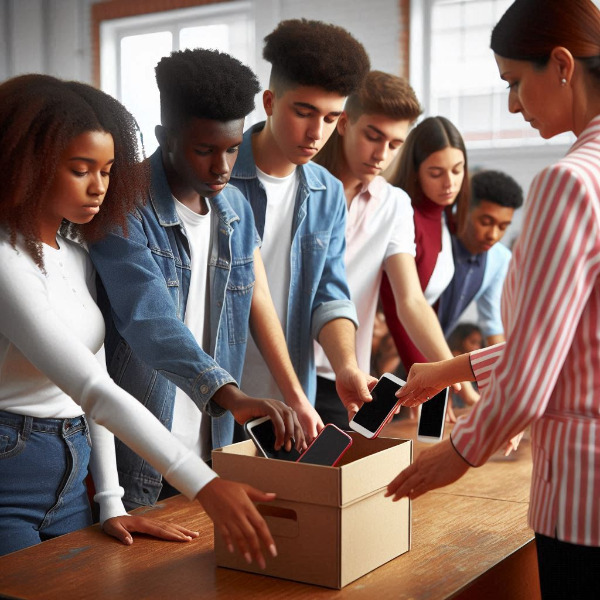Classroom Cellphone Bans: Pros and Cons

Schools are instituting bans on cell phones in classrooms. These bans aim to create a more focused, interactive, and supportive learning environment for students. But they are certainly controversial. Some large school districts like Los Angeles Unified School District and New York City Public Schools are looking to or have already implemented district-wide cellphone bans. Though this is more common in K-12 classroom, in higher education there are examples of individual faculty, certain courses or departments that have initiated bans.
The reasons generally given for these bans include:
Reducing Distractions: Cell phones can be a significant source of distraction for students, leading to decreased focus and engagement in class
Improving Academic Performance: Studies suggest that limiting cell phone use in classrooms can lead to better academic outcomes, as students are more likely to pay attention and participate in lessons
Enhancing Social Interaction: Banning cell phones encourages face-to-face communication and interaction among students, which is crucial for developing social skills.
Preventing Cyberbullying: Cell phones can be used to facilitate cyberbullying of students, faculty and administration, and removing them from the classroom can help create a safer environment
Promoting Mental Health: Excessive screen time and social media use have been linked to mental health issues in young people. Reducing cell phone use in schools can help mitigate these effects
When cell phones first became more prevalent with students (starting with college students and working down to high school and now younger students) there were individual teachers who instituted bans on using them in class. There were also teachers who promoted the wise use of them in their courses. The cons side of this also has good reason against banning cell phones from classrooms
As Educational Tools: Cell phones can be powerful educational tools, providing access to learning apps, online resources, and educational videos that can enhance the learning experience.
For Emergency Communication: Cell phones allow students to quickly contact parents or emergency services in case of an emergency, providing an added layer of safety.
Developing Digital Literacy: In today's digital age, students need to learn how to use technology responsibly. Allowing controlled use of cell phones in the classroom can help develop these skills.
Access to Information: Cell phones enable students to instantly look up information, conduct research, and verify facts during lessons, promoting active learning.
Inclusivity: For students with special needs, cell phones can provide necessary accommodations, such as text-to-speech applications and other assistive technologies.
Organizational Tools: Many students use their phones to keep track of assignments, deadlines, and schedules through calendar apps and reminders.
Parental Contact: Parents can directly communicate with their children, which is reassuring for both parties, especially in cases of schedule changes or family emergencies.
A web search will turn up lots of articles on the pros and cons of cell phone use and bans on their use in classrooms.
https://congressionaldigest.com/pros-and-cons-of-banning-cellphones-in-schools/
https://news.harvard.edu/gazette/story/2023/03/experts-see-pros-and-cons-to-allowing-cellphones-in-class/
 When I was teaching in a high school, I used to tell students (and faculty) that we were not preparing them for jobs. I was sure many of our students would end up in jobs with titles that did not exist then. There is a song by The Byrds from the 1960s titled "So You Wanna Be a Rock 'n' Roll Star." In 2024, it could be "So You Want To Be An AI Prompt Engineer."
When I was teaching in a high school, I used to tell students (and faculty) that we were not preparing them for jobs. I was sure many of our students would end up in jobs with titles that did not exist then. There is a song by The Byrds from the 1960s titled "So You Wanna Be a Rock 'n' Roll Star." In 2024, it could be "So You Want To Be An AI Prompt Engineer."